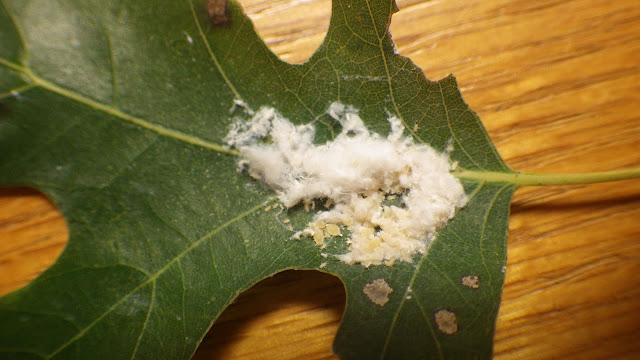There a several species of stinging caterpillars that are native to the area, and the southern flannel moth, puss moth, or asp is in abundance currently. They feed on several species of trees and shrubs (including oak, pecan, elm, hackberry, and dwarf yaupon) and are only of minor importance as a pest on plants. The caterpillars can get up to an inch and a half in length, and can be yellow or gray to a reddish brown color. They make a unique cocoon with a trap door at one end for the moth to emerge from, and they incorporate the larval hairs into the silk. This results in a cocoon roughly the size and color of the caterpillar. The moths have about an inch and a half wingspan, are covered in long wavy hair, and have blunt rounded wings.
 |
| Adult Southern Flannel Moth Photo: http://citybugs.tamu.edu/files/2010/05/Megalopyge-opercularis-Laura-Bellmore-Galveston-Co.jpg |
 |
| Southern Flannel Moth Caterpillar or Asp Photo: Kate Harrell |
 | ||||||
| Southern Flannel Moth Caterpillar or Asp Photo: Kate Harrell
Applying an ice pack to the sting site can relieve some of the pain, and oral antihistamines can be given to help relieve itching and burning sensations. Clear tape can be used to remove some of the spines by gently applying and stripping from the sting site. If an allergic reaction occurs, such as generalized itching or difficulty breathing, you should consult a physician immediately. You should also visit a physician if the sting site involves the eye.
If these or other stinging caterpillars become abundant, they can be controlled with treating with Bt, spinosad, azadirachtin, or a residual insecticide such as permethrin, cyfluthrin or other sprays labelled for ornamentals.
For information on a few other stinging caterpillar species check out this publication, and for more info on asps look at this website. Let me know if you have comments or questions.
Sincerely,
Kate Harrell
|






